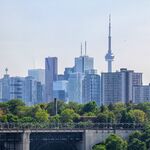The City neighbourhoods are taken from census tracts. They say:
Neighbourhoods are built from Statistics Canada Census Tracts. Census tracts include several city blocks and have on average about 4,000 people. Most service agencies have service areas that are defined by main streets, former municipal boundaries, or natural boundaries such as rivers. These service areas include several census tracts. It is not uncommon for service areas of community agencies to overlap. Choices about neighbourhood boundaries were made to make the data in the profiles useful to as many users as possible, and are not intended to be statements or judgments about where a neighbourhood starts or ends. The boundaries for these neighbourhoods were developed using the following criteria:
1.originally based on an Urban Development Services Residential Communities map, based on planning areas in former municipalities, and existing Public Health neighbourhood planning areas;
2.no neighbourhood be comprised of a single census tract;
3.minimum neighbourhood population of at least 7,000 to 10,000;
4.where census tracts were combined to meet criteria 2 or 3 above, they were joined with the most similar adjacent area according to the percentage of the population living in low income households;
5.respecting existing boundaries such as service boundaries of community agencies, natural boundaries (rivers), and man-made boundaries (streets, highways, etc.);
6.maintaining neighbourhood areas small enough for service organizations to combine them to fit within their service area; and
7.the final number of neighbourhood areas be manageable for the purposes of data presentation and reporting. See:
http://www1.toronto.ca/wps/portal/c...nnel=cf8a42f18beb2410VgnVCM10000071d60f89RCRD



